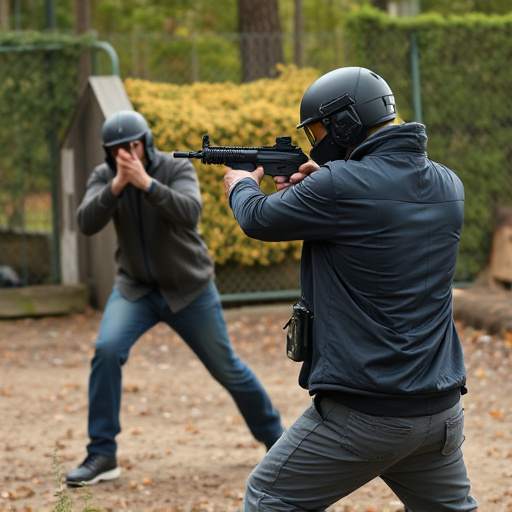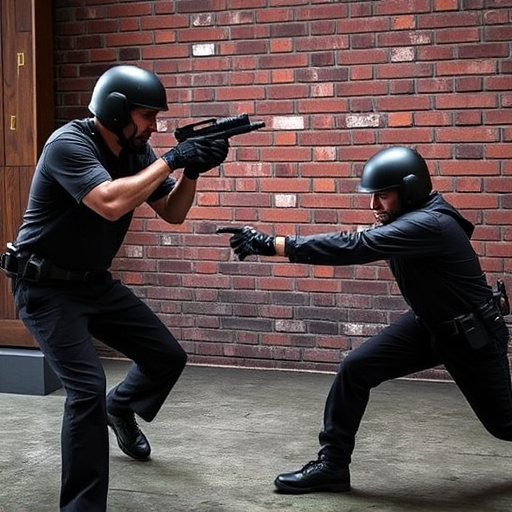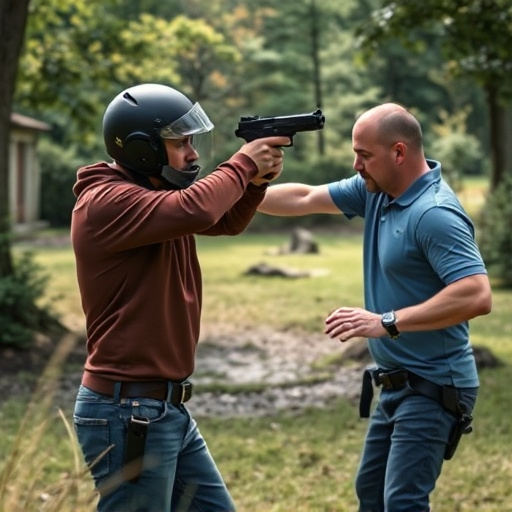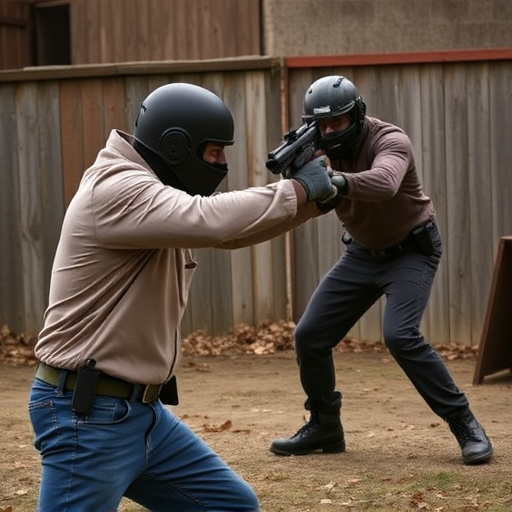Choosing the right disguised stun gun for self-defense involves balancing stopping power (measured in joules), ease of use, range, and specific needs. These stun guns, often mimicking everyday items like flashlights or keychains, offer discretion and powerful electric shocks for personal safety. Key technical aspects include voltage, current output, contact area, and shock duration. Opting for ranges between 12 to 15 feet ensures optimal defensive coverage. Prioritize safety by understanding local laws, undergoing training, maintaining the device, and using it as a last resort. Responsible ownership requires researching legal requirements regarding stun gun ownership, carry permits, voltage limits, and size restrictions in your region.
“In today’s uncertain world, self-defense tools like disguised stun guns are gaining popularity as modern solutions for personal safety. This comprehensive guide explores stun gun stopping power ratings, shedding light on their effectiveness as self-defense mechanisms. From understanding power ratings and factors influencing performance to legal considerations, we navigate the landscape of stun guns. Discover the intricacies of range, reach, and safety, ensuring informed decisions when choosing these concealed self-defense tools.”
- Understanding Stun Gun Stopping Power Ratings
- Disguised Stun Guns: Self-Defense Tools for Modern Times
- Factors Influencing Stun Gun Effectiveness
- Evaluating Stun Gun Range and Reach
- Safety Considerations When Using Stun Guns
- Legal Aspects of Owning and Carrying Stun Guns
Understanding Stun Gun Stopping Power Ratings

Stun guns, often referred to as electronic control devices (ECDs), are popular self-defense tools known for their ability to incapacitate an attacker with a powerful electric shock. Understanding stopping power ratings is crucial when choosing a stun gun as a means of personal protection. These ratings indicate the level of force and effectiveness a stun gun can deliver, ensuring users get a device that aligns with their needs.
The stopping power of a stun gun is typically measured in joules, representing the energy delivered per unit area. Higher joule ratings generally correspond to more powerful shocks, capable of causing muscle contractions and temporary paralysis. Disguised stun guns, often designed to look like everyday objects, offer a unique advantage by providing personal defense without drawing immediate attention. When selecting such a device, consider its stopping power rating in conjunction with factors like ease of use, range, and the specific situations you anticipate using it for.
Disguised Stun Guns: Self-Defense Tools for Modern Times

In today’s world, where personal safety is a top concern for many individuals, concealed and disguised self-defense tools have gained significant popularity. One such innovative device that has been making waves is the hidden stun gun—a compact and unassuming tool designed to provide immediate protection in potentially dangerous situations. These stun guns are meticulously crafted to look like everyday items, such as flashlights, pens, or even cell phones, allowing users to carry them discreetly without drawing unwanted attention.
The appeal of disguised stun guns lies not only in their ability to deliver a powerful electrical shock but also in their potential to save lives by providing an extra layer of security for those who may find themselves in risky scenarios. Whether it’s a late-night walk home or a business trip to unfamiliar territories, having a self-defense tool that blends seamlessly into one’s possession can offer peace of mind. With the rising need for personal safety, disguised stun guns have emerged as reliable and modern self-defense tools for individuals seeking an extra measure of protection.
Factors Influencing Stun Gun Effectiveness

The effectiveness of a stun gun, or electroshock weapon, is influenced by several key factors. Firstly, the voltage and current output play a crucial role in delivering a powerful enough shock to incapacitate an assailant. Higher voltage typically means more intense jolts, potentially increasing stopping power. However, it’s essential to consider safety and legal aspects, as excessive voltage could cause severe injuries or even be fatal if misused.
Another significant factor is the stun gun’s design and features. Disguised self-defense tools, often incorporated into everyday objects like flashlights or keychains, offer a level of discretion. But their effectiveness might differ based on the size of the contact area with the target and the weapon’s ability to make reliable electrical connections. Range and duration of the stun also matter; shorter ranges may not provide enough time for the victim to escape, while longer-lasting shocks can ensure better control over a more powerful weapon.
Evaluating Stun Gun Range and Reach

When evaluating stun guns, understanding their range and reach is crucial for effective self-defense. Disguised stun guns, often compact and designed to look like everyday items, offer a unique advantage in terms of portability and surprise factor. However, it’s important to note that their power isn’t solely determined by size; it’s the energy delivered per unit area that makes a stun gun effective. The range can vary significantly based on the device’s voltage output and current, as well as the contact area with the target.
For optimal defensive coverage, consider stun guns with ranges between 12 to 15 feet. This allows for a strategic distance, enabling users to deploy the tool effectively without closing in too much, which could put them at risk. Moreover, the reach should be sufficient to create a safe buffer zone, ensuring the user has time to escape or call for help if needed.
Safety Considerations When Using Stun Guns

When considering a disguised stun gun as a self-defense tool, it’s paramount to prioritize safety above all else. These devices can be powerful and, if used incorrectly, may cause serious harm or even permanent injury. Users must familiarize themselves with local laws regarding stun guns, ensuring they are legal and understanding the specific requirements for carry and use. Proper training is essential; learning how to accurately deploy the stun gun without endangering bystanders or causing unnecessary pain is crucial.
Additionally, safety features like laser sights or stun intensity settings can aid in precise application, minimizing collateral damage. Users should also be aware of their surroundings, using these tools as a last resort when faced with imminent threat. Regular maintenance and care of the device are vital to ensure reliable operation when needed most.
Legal Aspects of Owning and Carrying Stun Guns

In many regions, owning and carrying a stun gun for self-defense purposes is legal, provided it complies with local regulations. Disguised stun guns, often designed to look like everyday items like flashlights or keys, are increasingly popular as they offer a level of discretion when potentially life-saving tools might be needed. Before considering such a purchase, individuals should thoroughly research and understand the specific laws in their area regarding stun gun ownership, carry permits (if required), and any restrictions on voltage or size.
Compliance with these legal aspects not only ensures personal safety but also protects users from potential legal consequences. Some jurisdictions have specific requirements for stun guns, such as registration or permit systems, while others may restrict the accessibility based on age or previous criminal records. Staying informed about these regulations is key to responsible ownership and effective self-defense using these powerful tools.
Stun guns, with their concealed designs as disguised stun gun self-defense tools, offer individuals a powerful option for personal safety. Understanding stopping power ratings, range, and legal considerations is essential to make informed choices. By evaluating these factors, users can ensure they possess the right tool for effective self-defense in modern times. Remember, proper training and safety measures are crucial when considering any type of self-defense equipment.
